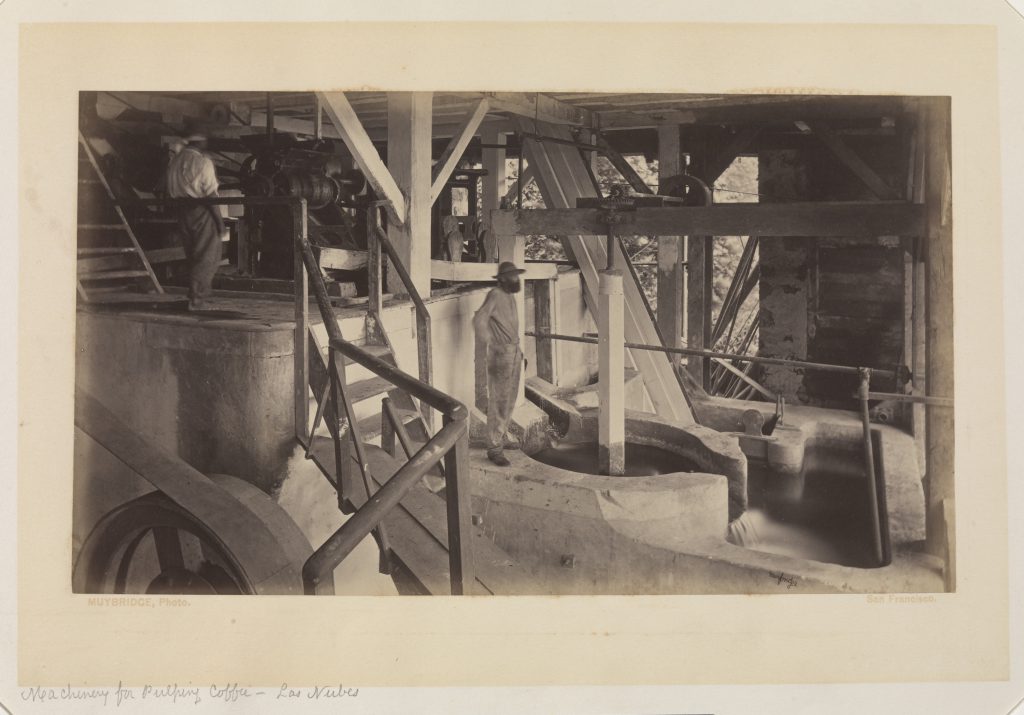
In 1875, the pioneering photographer Eadweard Muybridge, better known for his experiments in photographing motion, traveled through Central America. His photographs offer an early photographic record of Gutaemala’s coffee industry, just as it entered its first boom period.
This photograph captures a critical time in the evolution of the global coffee industry — the development of the wet mill. Writing about a decade after this photograph was taken, the American coffee expert Francis Thurber described this as a ‘new method’ of processing coffee, which was sometimes known as the “West India preparation.” According to Thurber, this method was already in wide use (to a greater or lesser degree) in Ceylon, India, Java, Venezuela, and Brazil. Clearly, as Muybridge’s photograph shows, it had also arrived in Guatemala. Of Guatemalan coffee, Thurber wrote that the finer grades “are regarded as equal in flavour, and by some judges, superior to any other coffee grown.” The industrial revolution was quickly making its way to the coffeelands, although setting up this machinery must have required a considerable amount of capital and expertise. Presumably, the people who did this hoped that the improved quality (and therefore higher prices) would make the expense worthwhile. Thurber comments while the wet method “is rapidly growing in favor… there are many coffee-drinkers who maintain that coffee produced by the old [dry] method is superior in flavour,” a conversation that continues to the present day.
